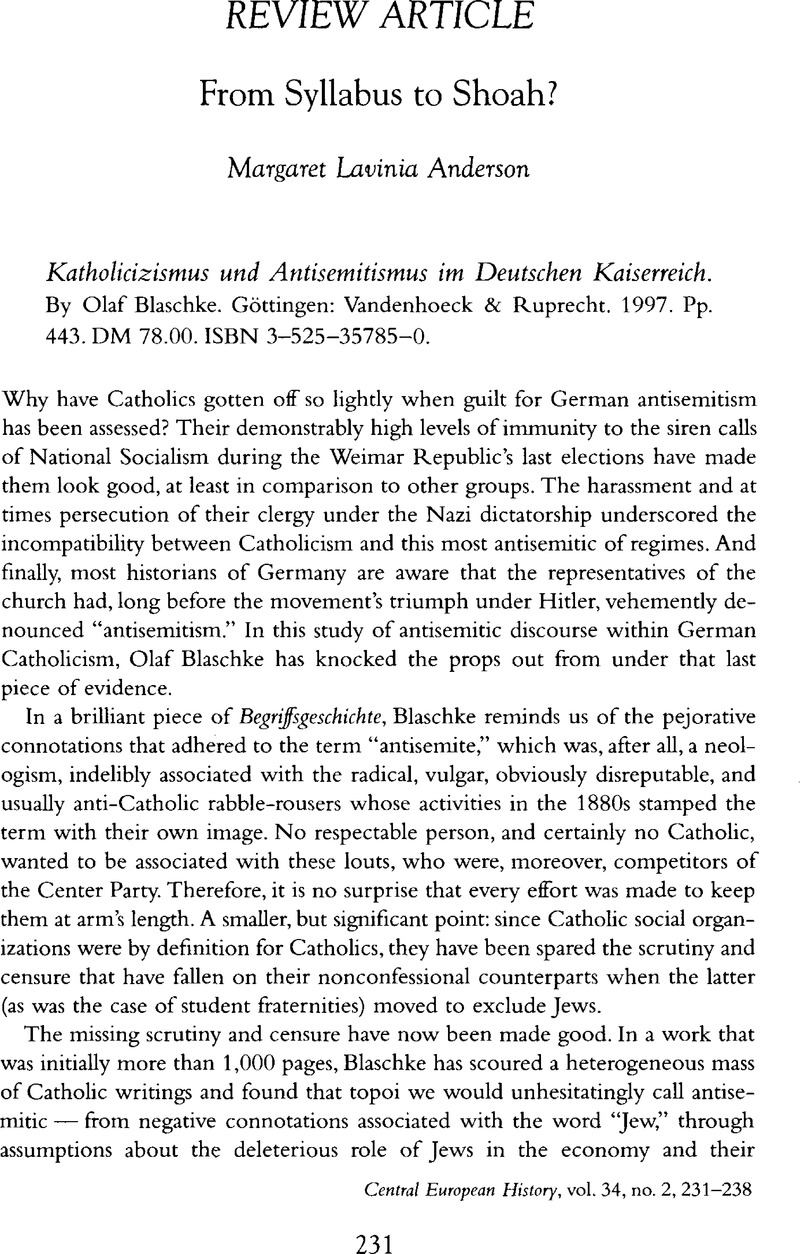Published online by Cambridge University Press: 16 December 2008

1. Kershaw, Ian, Public Opinion and Political Dissent in the Third Reich: Bavaria 1933–1945 (1983), 277Google Scholar.
2. Blaschke means the Vatican's eight theses attacking racism, sent to Catholic universities in April 1938, which “even contemporaries,” he says (p. 280), “saw [as] … above all a continuation of the fight against modernity …”
3. Quoted in Healy, Róisen, “The Jesuit as Enemy: Anti-Jesuitism and the Protestant Bourgeoisie of Imperial Germany, 1890–1917” (Ph.D. diss, Georgetown University, 1999), 237Google Scholar.
4. “Der österreichische Antisemitismus,” Historisch-Politische Blätter 100 (1887): xxvi, 358–79Google Scholar. Haas wrote at least thirty articles for this journal, whose editor, Edmund Jörg, is one of Blaschke's chief examples of antisemitism.
5. E.g., In 1881, Edmund Jörg wrote in the Historisch-Politische Blätter 87, 1:16, that “we have always preferred to use the more general term of ‘Geldjudentum,’ which unfortunately applies to many baptized Christian Germans, on into the aristocracy …”